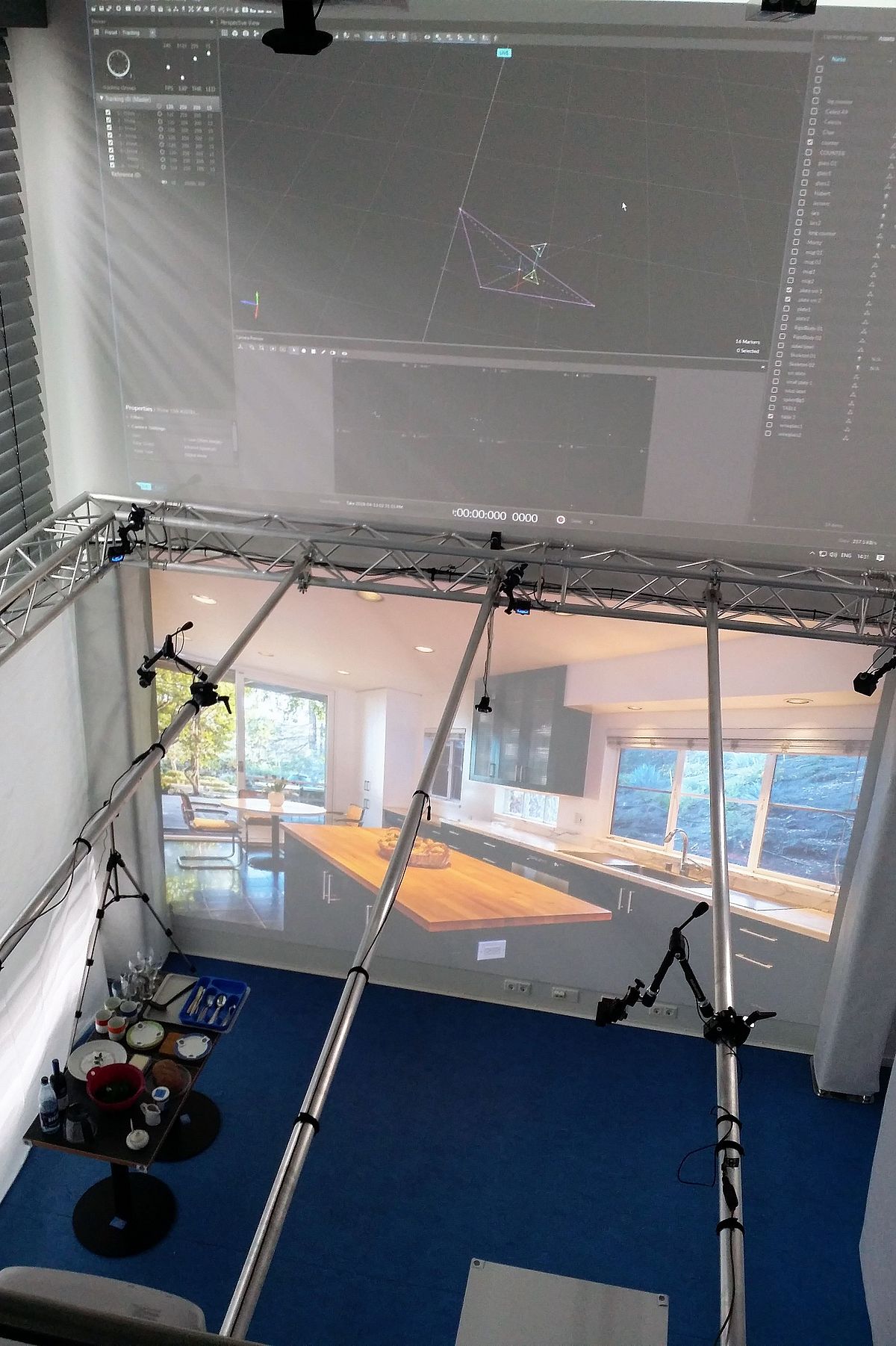BiosignalsLab
The Biosignals Lab (see Figure) at the Cognitive Systems Lab (CSL) consists of an interaction space (5x4m) which allows to blend real with virtual reality interactions .
The Biosignals lab is fully equipped with a range of sensory devices to capture biosignals resulting from human behaviour like speech, motion, eye gaze, muscle and brain activities under both controlled and less restricted open-space conditions.
Available sensors:
- Realsense depth camera
- fNIRS system stationary 16 Transmitter/Reciever
- Stationary and head-mounted cameras
- Near- and far-field microphones for speech and audio event recording
- A marker-based 9-camera OptiTrack motion capture system
- Mobile eye-tracking with Pupil Labs headsets (https://pupil-labs.com/)
- Nrain activity recording based on a BrainProducts (https://www.brainproducts.com/) actiCHamp 64-channel electroencephalography (EEG)
- Mobile EEGs based on OpenBCI (https://openbci.com/) and g.Tec’s g.Nautilus(https://www.gtec.at).
- Muscle activity acquisition with stationary 256-channel electromyography (EMG) amplifier from OT Bioelettronica (www.otbioelettronica.it)
- Microsoft Hololens (https://www.microsoft.com/de-de/hololens)
- HTC Vive
Wireless motion tracking based on PLUX (https://plux.info/):
- Inertial sensors
- Electrodermal activity (EDA) sensors
- mobile 4-channel devices for muscle activity acquisition
- Blood Volume Pulse sensor
See [Meier et al., 2018] for more details on the Biosignals Lab, the hard- and software setup as well as the various devices. Furthermore, the Biosignals Lab comprises a large shielding cabin to record high-quality biosignals in clean and controlled conditions.
[Meier et al., 2018 ] Meier M, Mason C, Porzel R, Putze F, Schultz T. Synchronized Multimodal Recording of a Table Setting Dataset. In: IROS 2018: Workshop on LatestAdvances in Big Activity Data Sources for Robotics & New Challenges, Madrid,Spain 2018.


